Qué es una máquina perfiladora de marcos de puertas metálicas?
A máquina formadora de rollos de marco de puerta de metal es un tipo de equipo utilizado en el proceso de fabricación de marcos metálicos para puertas. Funciona alimentando una tira de metal a través de una serie de rodillos para darle gradualmente la forma y el tamaño deseados. Este proceso se conoce como perfilado, y permite una producción precisa y eficaz de marcos metálicos para puertas.
La capacidad de producción se refiere a la cantidad máxima de marcos metálicos para puertas que una máquina de perfilado puede producir en un periodo de tiempo determinado. Suele medirse en unidades por hora y puede variar en función de varios factores, como la velocidad de la máquina, el grosor del material y la complejidad del diseño.
La capacidad de producción es un parámetro importante para los fabricantes porque influye directamente en la eficacia de la producción y la rentabilidad. Las máquinas con alta capacidad de producción pueden fabricar más marcos de puerta en menos tiempo, lo que puede aumentar la productividad global y reducir los costes de mano de obra. Por otro lado, las máquinas con baja capacidad de producción pueden no ser capaces de seguir el ritmo de la demanda, lo que se traduce en plazos de entrega más largos y costes de producción más elevados.
Además, la capacidad de producción también puede influir en la calidad del producto acabado. Las máquinas que funcionan a alta velocidad pueden producir más marcos de puerta, pero también pueden ser más propensas a errores o defectos. Es importante que los fabricantes equilibren la capacidad de producción con medidas de control de calidad para garantizar que sus productos cumplen las normas necesarias.
En general, conocer la capacidad de producción de una perfiladora de marcos de puertas metálicas es crucial para los fabricantes que desean optimizar sus procesos de producción y seguir siendo competitivos en el mercado.
Factores que afectan a la capacidad de producción de una perfiladora de marcos de puertas metálicas
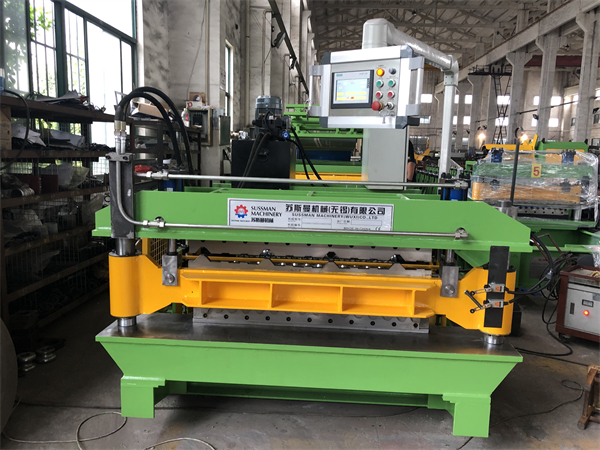
La capacidad de producción de una máquina perfiladora de marcos de puertas metálicas está determinada por varios factores que pueden afectar a la eficiencia y velocidad de la máquina. Estos son algunos de los factores clave que pueden afectar a la capacidad de producción de una perfiladora:
Velocidad de la máquina: Uno de los factores más importantes que afectan a la capacidad de producción es la velocidad a la que funciona la máquina. Una máquina con una mayor velocidad de producción tendrá normalmente una mayor capacidad de producción que una máquina más lenta. La velocidad de la máquina viene determinada por varios factores, como la potencia del motor, el diseño de los rodillos y el mecanismo de control de la velocidad.
Grosor del material: El grosor del metal utilizado para crear el marco de la puerta también puede afectar a la capacidad de producción de la perfiladora. Los materiales más gruesos requieren más fuerza y velocidades de producción más lentas para garantizar una conformación adecuada, lo que puede reducir la capacidad de producción. Por el contrario, los materiales más finos pueden moldearse con mayor rapidez y eficacia, lo que puede aumentar la capacidad de producción.
Complejidad del diseño: La complejidad del diseño creado por la perfiladora también puede afectar a su capacidad de producción. Los diseños más complejos suelen requerir más pasos de conformado y una velocidad de producción más lenta, lo que puede reducir la capacidad de producción de la máquina. En cambio, los diseños más sencillos pueden producirse con mayor rapidez y eficacia, lo que puede aumentar la capacidad de producción.
Mantenimiento: El mantenimiento adecuado de la máquina de perfilado es fundamental para garantizar un rendimiento óptimo y una alta capacidad de producción. Un mantenimiento regular puede evitar el tiempo de inactividad debido a averías y garantizar que la máquina funcione con la máxima eficiencia. Descuidar el mantenimiento puede hacer que la máquina se ralentice o incluso deje de funcionar, lo que puede reducir significativamente la capacidad de producción.
Habilidad del operario: La habilidad del operario de la máquina también puede influir en la capacidad de producción de la perfiladora. Un operario cualificado que esté familiarizado con la máquina y sus capacidades pueden trabajar con mayor rapidez y eficacia, lo que se traduce en una mayor capacidad de producción. En cambio, los operarios inexpertos o mal formados pueden trabajar más despacio y cometer errores, lo que puede disminuir la capacidad de producción.
En resumen, la capacidad de producción de una máquina de perfilado de marcos de puertas metálicas puede verse afectada por varios factores, como la velocidad de la máquina, el grosor del material, la complejidad del diseño, el mantenimiento y la habilidad del operario. Al optimizar estos factores, las empresas pueden aumentar la capacidad de producción de la máquina y mejorar su eficiencia productiva.
Cómo calcular la capacidad de salida de una máquina perfiladora de marcos de puertas metálicas?
-
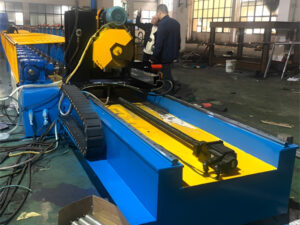 Máquina formadora de rollos de vigas de acero para estanterías conjuntas
Máquina formadora de rollos de vigas de acero para estanterías conjuntas -
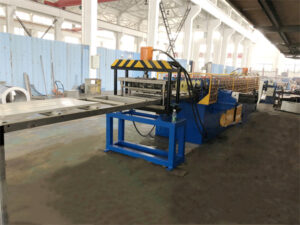 Máquina formadora de rollos de paneles de estanterías para estanterías de acero metálico
Máquina formadora de rollos de paneles de estanterías para estanterías de acero metálico -
 Máquina de soldadura de viga escalonada de estantería vertical de 6 lados
Máquina de soldadura de viga escalonada de estantería vertical de 6 lados -
 Máquina formadora de rollos de haz escalonado para soldadura láser
Máquina formadora de rollos de haz escalonado para soldadura láser -
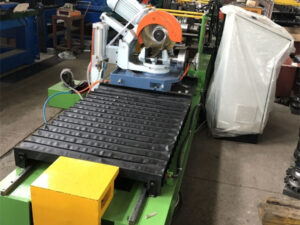 máquina perfiladora de vigas de caja para estanterías de acero
máquina perfiladora de vigas de caja para estanterías de acero -
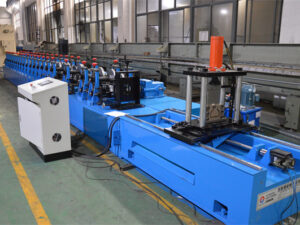 Máquina perfiladora de estanterías verticales para columna de servicio pesado
Máquina perfiladora de estanterías verticales para columna de servicio pesado
La capacidad de producción de una perfiladora de marcos de puertas metálicas puede calcularse mediante la siguiente fórmula:
Capacidad de producción = Número de estaciones de formado × Velocidad de producción × Tiempo de funcionamiento
Dónde:
Número de estaciones de perfilado: El número de estaciones o etapas del proceso de perfilado. Puede determinarse contando el número de conjuntos de rodillos o soportes que dan forma al metal en el perfil deseado.
Velocidad de producción: La velocidad a la que se alimenta el metal a través de la máquina de perfilado, medida en metros por minuto (m/min).
Tiempo de funcionamiento: La cantidad de tiempo que la máquina funciona al día, normalmente medido en horas.
Por ejemplo, si una perfiladora de marcos de puertas metálicas tiene 12 estaciones de perfilado, una velocidad de producción de 20 metros por minuto y funciona durante 8 horas al día, la capacidad de producción sería:
Capacidad de producción = 12 × 20 × 8 = 1.920 metros al día
Esto significa que la máquina puede producir 1.920 metros de marco de puerta metálico al día, suponiendo que funcione de forma continua durante 8 horas.
Ejemplos reales sobre la capacidad de producción de una perfiladora de marcos de puertas metálicas

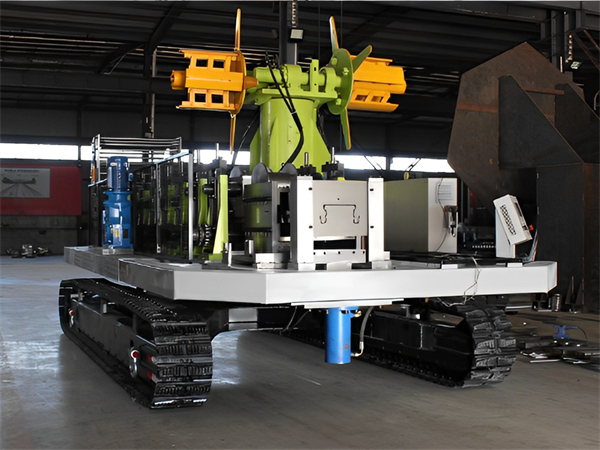
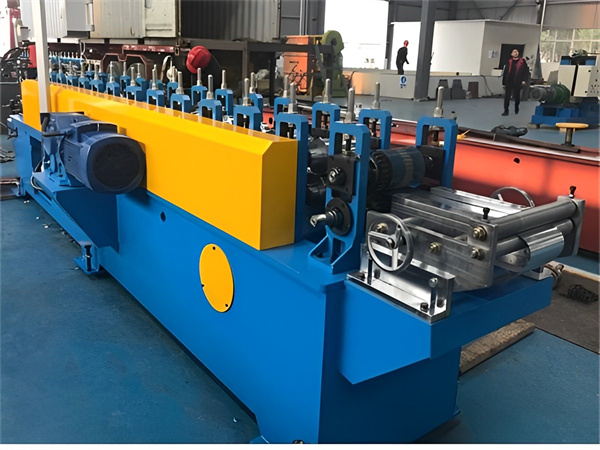
Las perfiladoras de marcos de puertas metálicas se utilizan en la producción de marcos de puertas para edificios residenciales y comerciales. Estas máquinas utilizan un proceso de plegado continuo para crear la forma deseada del marco metálico.
He aquí algunos ejemplos reales de perfiladoras de marcos de puertas metálicas y sus capacidades de producción:
Maquinaria Samco - Modelo DF5
El Modelo DF5 de Maquinaria Samco es una máquina formadora de rollos diseñada específicamente para la producción de marcos de puertas de metal. Tiene una velocidad máxima de línea de 50 pies por minuto y puede producir hasta 10 marcos de puerta por minuto. Esta máquina es capaz de producir marcos de puerta con una anchura máxima de 4 pulgadas y un grosor máximo de 0,12 pulgadas.
Bradbury Group - Modelo DFQ
El modelo DFQ de Bradbury Group es una máquina perfiladora de alta velocidad que puede producir marcos de puertas metálicas a una velocidad de hasta 120 pies por minuto. Esta máquina está diseñada para producir marcos de puertas con una anchura de hasta 8 pulgadas y un grosor de hasta 0,14 pulgadas. También tiene la capacidad de producir marcos de puertas con una variedad de perfiles y configuraciones diferentes.
Maquinaria Samco - Modelo DF12
El Modelo DF12 de Maquinaria Samco es una máquina formadora de rollos de trabajo pesado diseñada para la producción de marcos de puerta de metal y marcos de ventana. Tiene una velocidad máxima de línea de 60 pies por minuto y puede producir hasta 15 marcos de puerta por minuto. Esta máquina es capaz de producir marcos de puerta con una anchura máxima de 6 pulgadas y un grosor máximo de 0,135 pulgadas.
La capacidad de salida de una máquina de perfilado de marco de puerta de metal depende de varios factores, inclusive la velocidad de línea, la anchura y el grosor máximos del metal, y la complejidad del perfil de marco de puerta. Máquinas de capacidad más altas como el Modelo DFQ del Grupo Bradbury son diseñadas para operar a velocidades de línea más rápidas y producir marcos de puerta con perfiles más complejos, mientras máquinas de capacidad más bajas como el Modelo DF5 de Maquinaria Samco son más adecuadas para perfiles de marco de puerta más simples y corridas de producción más pequeñas. La elección de la máquina dependerá de las necesidades específicas y los requisitos de producción del fabricante.
En resumen, las perfiladoras de marcos de puertas metálicas son una parte esencial del proceso de producción de marcos de puertas residenciales y comerciales. Estas máquinas utilizan un proceso de plegado continuo para crear la forma deseada del marco metálico. La capacidad de producción de una máquina depende de varios factores, como la velocidad de la línea, la anchura y el grosor del metal y la complejidad del perfil del marco de la puerta. La elección de la máquina adecuada depende de las necesidades específicas y los requisitos de producción del fabricante. Con la máquina adecuada, los fabricantes pueden producir marcos de puertas metálicas de alta calidad de forma eficiente y eficaz.
